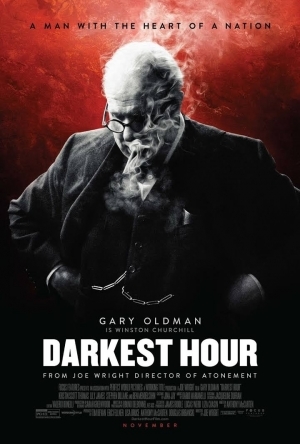Phil Leader (619 KP) rated The Tournament in Books
Nov 27, 2019
Reilly's books, under the usual all-out action sequences, always convey a good plot and storyline and have strong characterisation. Here those are to the fore. The main players are a young Princess Elizabeth; daughter of King Henry VIII and soon to be Elizabeth I and her teacher, Roger Ascham. Sultan Sulieman the Magnificent has invited all the best chess players across Europe to play to decide which nation can claim to have the ultimate chess champions. Elizabeth and Roger accompany England's entrant both to avoid the black death but also because Ascham wants to give Elizabeth a wide education just in case she becomes queen.
After a few adventures on the way the party arrives, along with the representatives of the other nations. Court intrigue and politics abound and everyone has their own agenda. When there is a high profile murder, Sulieman requests the aid of Ascham - known for his insight and ability to resolve problems using logic - to find the culprit before there is an international scandal. As the bodies pile up, Ascham and young Elizabeth face dangerous and unknown enemies and uncover plots and dark secrets.
The medieval detective story is not entirely new for Reilly. Previous he has written a couple of short stories that are available for download from his website - www.mattewreilly.com - with this theme. Dead Prince concerns the death of the Dauphin in France and is investigated by the king's architect. Roger Ascham and the King's Missing Girl is a story that precedes The Tournament by a few months and effectively introduces Ascham and his skills as he tracks down a serial kidnapper and murderer in Cambridge.
Reilly acknowledges at the end of the book that he was influenced by works such as The Name of the Rose and indeed this has much of the same flavour. The plot is complex and has the chess match running through it (and indeed sections of the book are named after chess pieces). Everything is very well handled by Reilly and everything unravels nicely in the finale of the book.
This has also been well researched. With many real historical figures included (not only Elizabeth, Ascham and Sulieman but a supporting cast that includes Ivan the Terrible and Michelangelo) and the feel of all the descriptions is very authentic.
One aspect that has to be mentioned is that, since Reilly wanted to explore something that may have influenced Elizabeth in her future life, there are a fair number of events of a sexual nature that occur. Some of these have a direct bearing on the plot, others are so that Elizabeth can form opinions on sex and marriage. Reilly has printed a warning at the start of the book that this is not for younger readers, and I can fully endorse that.
I can imagine that a number of Reilly fans will not enjoy this book - the pace is slow and methodical rather than headlong and there are very few 'action' sequences to speak of. However I would recommend this book to anybody who likes historical detective style stories.
Darren (1599 KP) rated The King (2019) in Movies
Nov 27, 2019
As Hal find himself in a new power, he doesn’t know who to trust, so he turns to Falstaff (Edgerton) to help him in battle, with in latest battle being with the future French king The Dauphin (Pattinson).
Thoughts on The King
Characters – Hal is the young prince that would become King, a role he isn’t ready for, he doesn’t want to see large scale bloodshed like his father’s reign, but finds his country in war from all sides, he wants to end the battles and will look for solutions, which don’t always work for him. Falstaff is the man Hal turns to for advice when it comes to conflict, he thought under King Richard and he knows how to outsmart an enemy, first he must give up his drinking problem though. The Dauphin is next in line to be king of France, he is leading the armies into battle and doesn’t want any part of a deal with the King of England.
Performances – Timothee Chalamet is strong in the leading role, continuing to put himself on the right path to do anything he wants to in the future. Joel Edgerton is always a great supporting star in any movie, this is no different, while Robert Pattinson as the villainous soon to be king does a great job too.
Story – The story here follows a young king taking his place on the throne while his country is involved in wars that he never started and now he wants to end, hoping to find a more peaceful way to end the battles, forcing him to learn the truth about the bitter war between the nations. This is one of those stories which once again puts our history out there for the world to see with the English being seen as an all-conquering nation that always believed they were right, the spin is seeing how the young king wants to try and find a more peaceful way to end things, but just doesn’t get a chance to solve these problems. The pacing follows everything we have seen before, not making this standout on any means whatsoever, which just leads us to disappointment once again.
Biopic/History – This is a film that claims to tell the story of a real king and how he was brave, just like every single one through the years, we don’t know what he was like or what the battles were like, we only know the outcome.
Settings – The settings show us how the kingdoms are beautiful and how the battlefields are covered in blood and bodies.
Scene of the Movie – The battle.
That Moment That Annoyed Me – It is the same typical history story.
Final Thoughts – This is one of the period piece dramas that does everything it needs to without giving us the complete truth to what is happening with the real history.
Overall: Simple Royalty Film.
Sophia (Bookwyrming Thoughts) (530 KP) rated Marie Antoinette, Serial Killer in Books
Jan 23, 2020
This book is a fantastic break for me – it's <b>not a fluffy book set in Paris with a Paris romance</b> (though there <i>is</i> a sort-of Paris romance I'm totally peachy with), despite the fact Alender starts things off with a gruesome murder involving a head being chopped off by a ghost.
No, I did not actually enjoy reading a person getting her head chopped off by a flying broken mirror shard caused by a ghost. I might be a ninja and secretly evil, but I don't actually enjoy those kinds of things.
France's history in the late 18th century is quite intriguing – from helping the US with the American Revolution against the British and then entering their own Revolution against the monarchy a little over a decade later. Alender's book is <b>full of rich details involving French history and culture circulating the Revolution</b> (despite the fact some facts were liberated by Alender to fit the overall plot of the story) as Colette tours France with her classmates, questions her roots and her friendship with Hannah, and tries to figure out why she's seeing a Marie Antoinette lookalike everywhere.
<b>The amount of French the author uses throughout the book isn't overwhelming</b> – it's enough to keep the intrigue, but not enough where it'll be overly confusing and categorizing the book as a piece of French literature. Then again, it's probably helpful when 1) the main character isn't entirely proficient at French, and 2) the romance languages are so similar, I pretty much understand the basis of the conversations with my sliver understanding of Spanish and Italian.
On the overall basis of the book being well written, I had mixed feelings for Colette for awhile – she's both likable and not likable at the same time. She's not likable because <b>she just seems to have a very snobby attitude of sorts, tries too hard to fit in with the rich and wealthy at her private school, and spends her time being a doormat in the beginning of the book for fear of facing Hannah's wrath</b>. As the book goes on and everyone makes Colette questions her friendship with Hannah, Colette slowly becomes likable – someone who isn't snobby after all, and her ending with Hannah is quite fantastic. Of course, it does become a little obvious there's some sort of gap between their friendship (and growing) since Colette secretly rebels at times without Hannah's knowledge.
All in all, <i>Marie Antoinette, Serial Killer</i> is <b>a book about deception, loyalty, and how even the dead can come back for revenge to complete unfinished business before they can finally rest in peace.</b>
<a href="https://bookwyrmingthoughts.com/review-marie-antoinette-serial-killer-by-katie-alender/"; target="_blank">This review was originally posted on Bookwyrming Thoughts</a>

VPN Shield - Proxy Wi-Fi Security & Unblock Sites
Business and Utilities
App
VPN Shield App guaranteed access to popular web sites, secure connection, protects your online...

EcoData: Radiation
Weather and Travel
App
Ever wanted to know the natural radiation where you live? Or compare the current radiation levels in...

TracePlay - Proudly afro-urban
Music and Entertainment
App
TracePlay is the First and Only Global Service that Provides 10 Live TVs, 30 Radios and more than...

Silent Landscape at Gallipoli: The Battlefields of the Dardanelles, One Hundred Years on
Book
In our first book, we explored the impact of the fighting on the landscape of the Western Front -...
Gareth von Kallenbach (980 KP) rated Darkest Hour (2017) in Movies
Jul 11, 2019
Winston Churchill is a very well know historically figure. He was known for his powerful speeches and bigger than life personality. This film takes a look at the early days of him being Prime Minister, during some of the most volatile days in the history of Europe. Not only does the story delve into the politics and struggles of Churchill to put forth his agenda in a hostile climate but also shows him at his most vulnerable. One example is after delivering his first radio address to the nation he walks home alone and to talk with and be reassured by his wife, Clementine Churchill (Kristin Scott Thomas), that his speech was good and people could hear him.
Gary Oldman is spectacular in his role as Chruchill. From the iconic speeches to the light moments with his family and personal secretary, Elizabeth Layton (Lily James), he puts forth a great performance. The supporting cast is great as well, highlighted by Mendelsohn, Scott Thomas and James. The flow of the film really worked, under direction of Joe Wright (Atonement, The Soloist, and Pan). The two hour and five minute run time felt shorter and the movie really moved along. There were some points that they showed some battle scenes, after all it is a World War II era film, which did feel like afterthoughts and didn’t really add anything to the movie. The tension of the moment was well done even without these scenes. Besides those scenes the movie was shot well and added to the overall feel of the movie.
This film will appeal to those who are fans of history, the World War II era specifically, and historical figures. It also is powerful and heartfelt. Really the performances of the cast are what really stuck with me and will be the reason that I watch it again.

Weather4D Pro
Weather and Navigation
App
Weather4D PRO is the first application to use the power of GPU for iPad and iPhone to animate the...

Mieux dormir - Psychologies
Health & Fitness and Education
App
Réguler votre sommeil et retrouver des nuits réparatrices, avec Psychologies coaching. Mal dormir...



